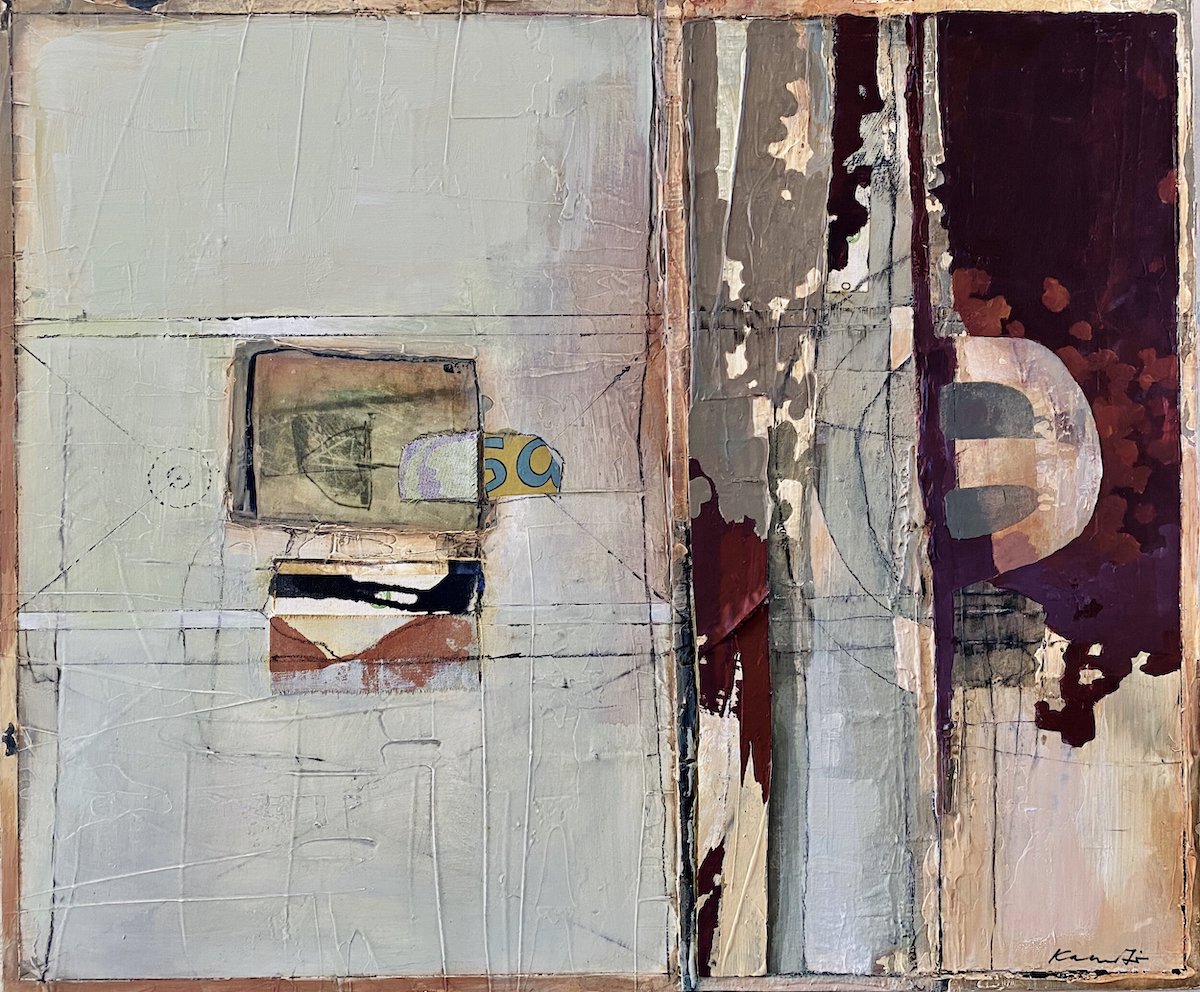
There’s a paradox to the relative status of different approaches to making art. For the individual artist, there’s no such thing as being too well known, but when it comes to an approach that’s succeeded for others, the perception that it’s been done before can steal your thunder. Take abstraction, for example. If you happened to be in the right place at the right time (not to mention of the right race and gender!), certain techniques of image-making earned you a permanent place not only in art history but also in the public consciousness. But miss that moment, even by a little, and it can be a different story.
With the excellent new group show Towards at 21st Century Abstraction, on view at Westmont’s Ridley-Tree Museum of Art through August 14, eight American painters of varying backgrounds make a strong case for the aesthetic power of abstraction. Connie Connally, Jeri Ledbetter, Doug Trump, Brad Ellis, Wosene Worke Kosrof, Katherine Chang Liu, Sammy Peters, and David Bailin all carry on in recognizable modes that communicate effectively without having to depend on any narrowly defined creative lineage. They participate in a phenomenon that’s at once more venerable, more global, and more relevant than any one narrative can capture.
Peter Frank, who helped put the show together and wrote an insightful essay for the catalog, characterizes the fresh look these artists deserve this way: “the durability of an idea or practice — and abstract art is both — depends not on the viability of arguments made on its behalf, or on its success dictating its own terms of reception, so much as on the vitality of its application to actual practice.”
Sign up for Indy Today to receive fresh news from Independent.com, in your inbox, every morning.
For Connie Connally, that means noticing the way her move from representational portraiture — at which she excelled — to abstract landscape has unleashed her inner Monet and Kandinsky. Brad Ellis works in a multiplicity of styles that, taken together, signal the presence of a questing spirit, informed by art history yet working outside of any constraints imposed by historical expectations. Katherine Chang Liu’s elevated collage panels spring from the carefully crafted poetic titles she keeps in notebooks until they are ready to take pictorial form. Sammy Peters achieves his delightfully dry and sophisticated impact through adhering to certain idiosyncratic strictures of his own creation, such as “use colors that have no name,” “include something awkward in every painting,” and “mix the complex and the smooth.”
David Bailin’s large drawing series “The Erasing” bears traces of portraiture, along with thousands of other things, including floor plans, elevations, and shadows. These half-erased fragments come together in the service of a complex ritual of grief and empathy toward the artist’s father, whose dementia and dying these monumental works document. Doug Trump, who occupies the other end of the spectrum when it comes to scale, nevertheless generates extraordinary drama within a smaller compass in his collage-based works. Jeri Ledbetter’s explosive concatenations of line and color index the presence of the body of a singular individual at a distinct moment in time.
The eighth artist, Wosene Worke Kosrof, was brought in as a guest of the other seven. Kosrof, who exhibited at Sullivan Goss in 2020, represents a shining example of how abstract artists of the 21st century can create their own cultural traditions through individual practice. Based in Oakland, Kosrof’s iconographic style draws equally on the Amharic script he learned as a boy in Ethiopia and on the modern jazz that echoes through his California studio. It’s an unforgettable combination that inspires others by example.
Support the Santa Barbara Independent through a long-term or a single contribution.





You must be logged in to post a comment.